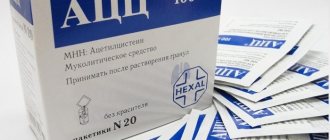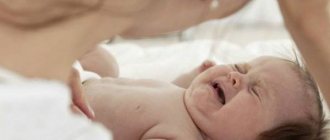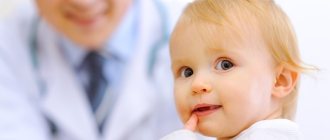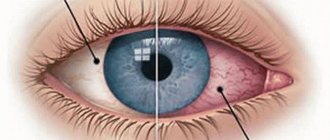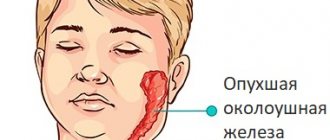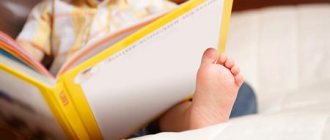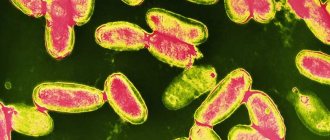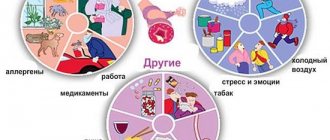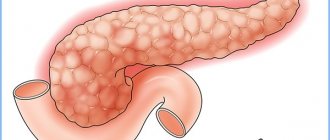Advertisement
Autism in children is a special mental disorder in children, which is explained by disturbances in the functioning of the brain and central nervous system. The term was first used in 1910. This diagnosis is always accompanied by problems with speech development, the child’s socialization in society, and the inability to create contacts and maintain communication. Scientists, observing the development of this disease in children, come to diametrically opposite conclusions both in terms of diagnosis and in explaining the causes of the disease and its treatment.
Essence of the disease
Usually, parents, when faced with a problem, do not realize what autism is in their child . Due to a lack of information, they do not understand the seriousness of the problem and what they will have to face in the future as they grow older.
We will try to explain what autism is in simple words. This is an extreme form of self-isolation associated with a disorder of the central nervous system, which manifests itself in impaired perception and communication function.
There is no or weakly expressed reaction to external stimuli, one’s own emotions are not sufficiently expressed and the emotions of others are perceived.
At first, autistic children are practically no different from their peers. As the disease progresses, in some people its symptoms begin to appear more clearly, while in others they are almost invisible to others.
Cases of milder manifestations of signs of the disease are classified as autism spectrum disorders. Recently, a peculiar culture of autistic people has even emerged, viewing the disease not as a disorder, but as a special, alternative cognitive style. However, for children with severe forms of the disease, the ability to achieve independent functioning upon reaching adulthood is unlikely.
The child was diagnosed with autism. What to do?
- First of all, experts recommend not to panic and not to deny the problem.
- Register on a forum or in a community of like-minded people. For example, “Autism. Forum of Parents and Professionals” or at the “Forum of Parents of Children with Autism”. This way you can understand that there are many people like you and study the experience of other families. The “Parent to Parent” manual will be useful.
- Talk to your child's relatives and siblings. Explain to them what autism is.
- Send your child for a medical examination. Children with ASD often have no sense of their own body and cannot communicate that something is hurting or wrong.
- Contact the nearest early intervention service in your city, an organization that helps children with developmental disabilities. For example, in Moscow this is the City Psychological and Pedagogical Center of the Department of Education. At this stage, it is important to achieve the correct diagnosis. Look for methods and a curator (tutor) who will write and correct the program for your child. Classes with a speech pathologist, a play therapist and group therapy are required.
Each case is individual - here you will have to act by trial and error.
- If a diagnosis has been made, register the child with a disability at the Bureau of Medical and Social Expertise. This will provide an opportunity to receive financial assistance and benefits, for example, vouchers for sanatorium treatment, free travel on public transport and others.
Features of behavior
The behavior of autistic children is characterized by the uniqueness of their games and the monotony of their movements. For example, a baby often spins around its axis, repeats swinging its arms, simply sits and sways for a long time, fidgets, examines, and shakes its fingers.
An autistic child is often indifferent to bright, specialized toys for children, but will begin to enthusiastically examine the fan blades.
He can literally stare at the workings of some mechanism. He enjoys playing with the switch, endlessly watching the lights go on and off.
If a child becomes interested in an ordinary toy, he will play with it in an unusual way. For example, focus on how one part works: how a doll’s eye closes, how the wheel of a toy car rotates. When looking at things, he brings them very close to his face and is attentive to small details.
The child protests when adults or other children try to join in his play. An autistic person is generally not interested in activities that involve interaction or physical contact with other people. Therefore, he does not like the process of changing clothes, bathing, or combing his hair. Often desperately resists hugs, kisses, and does not allow himself to be picked up.
Important ! An autistic person does not imitate the facial expressions and gestures of other people or repeats them unconsciously, out of place, without connecting them in any way with the context of the situation. He is sensitive to smells, loud sounds, and may be deeply immersed in himself, not paying attention to his parents leaving or returning home, and not responding to his name.
Unique abilities as a sign of autism
There is no doubt that children with autism perceive the world differently, for example, they are more sensitive to scents, stimuli and colors. Functional impairment may coexist with phenomenal memory, mathematical, musical or artistic talent. Anyone who's ever seen the movie Rain Man was probably impressed by the memory of the autistic main character, Raymond Babbitt, who knew the text from 7,600 books by heart. Such people are called “savants” (Savant syndrome) and in addition to the ability to memorize text, they surprise with geographical or astronomical knowledge. Among the “savant scientists” are brilliant poets, people with absolute pitch or photographic memory, as well as extrasensory perception.
Unfortunately, unique abilities are close to the problem of limiting other skills, such as self-service or good diction, but obvious talents help to master difficult functions. Using rote memory or superior hearing during therapeutic activities can be a factor in opening a child up to the world, encouraging him to work on improving his social skills.
Causes
To date, no single For the most part, the development of the disease is associated with genetic mutations.
Autism in a child
Suspicions have also been expressed about various environmental influences:
- infectious diseases;
- alcohol, smoking, drugs;
- disorders of fat metabolism in the mother;
- birth traumatic brain injury;
- heavy metal poisoning;
- prenatal stress.
An integrated approach links autistic disorders to impaired brain development shortly after conception. Localized pathology then expands under the influence of environmental factors, since the success of nervous system development depends on balanced immune activity.
From the point of view of cognitive psychology, autistic people have a weakened ability to perceive images holistically. This explains the specific interests and talents of autistic people.
Causes of autism
Autism is a complex disorder with no single cause. Experts rather talk about factors that increase risk. These factors may be genetic or non-genetic. Let's say there are genes that influence autism and speech development in a child.
Non-genetic factors that increase the risk of having a child with ASD include conceiving a child at a late age, infections in the mother during pregnancy, and environmental pollution. Sometimes these factors interact with each other.
There is a popular theory that links the spread of autism to vaccination of the population. At the moment there is no scientific evidence of this connection.
Establishing diagnosis
Typically, only mild forms of the disease are detected in adolescence or adulthood. But newborns diagnosed with autism either, since it is based on an analysis of behavior and not on pathogenic factors.
Symptoms of the disease are also found in a one-year-old baby, but the younger the age, the less reliable the diagnosis.
So, if symptoms are detected simultaneously in a one-year-old and a three-year-old child, then after a couple of years the first one may be more likely to be considered healthy.
At what age is this diagnosis usually made? Unfortunately, the average age of detection of the disease is five and a half years. About a third of children remain untested until they are eight years old. The optimal period for correcting the disease is missed. Therefore, doctors recommend screening for autism spectrum disorders before the age of three.
Having discovered early signs of autism in their child, parents should contact a pediatrician who will conduct a preliminary consultation and, if necessary, involve the help of a specialist in autism disorders.
Cognitive and communication abilities are assessed. To make a diagnosis, a limited ability for emotional contacts, stereotypical speech, lack of interest in imaginative games, and a tendency to study small details of objects must be detected.
Important! When analyzing symptoms and making a diagnosis, mental retardation, specific speech and hearing disorders, and mental disorders with similar symptoms (Rett syndrome, disintegrative disorder) must be excluded.
How to independently recognize manifestations of autism in your son/daughter.
autism gene
Although the origin of this disease is closely related to genetics, there is currently no scientific evidence of the existence of a specific gene that causes the disease. However, an international group of scientists relatively recently published the results of their research in the journal Science Translational Medicine. In the course of their work, they discovered that mutations in the PTCHD1 gene, located on a single male chromosome, are significantly associated with autism. According to scientists, this also explains the fact that boys are born with autism four times more often than girls.
However, the scientists themselves say that the small number of individuals in whose genetic structures this connection was identified during such an experiment is not fundamental evidence, but only one additional confirmation of one of the possible causes of autistic disorder.
Early symptoms
Despite the fact that the detected signs of autism in children under one year of age cannot serve as a reason for making an unambiguous diagnosis, they should cause closer attention to the child’s development in the future.
Symptoms of Autism
The earliest signs of the development of autism in children under one year old can be confused with problems with hearing development:
- Lack of reactions to sounds, response to your name. At six months old, healthy babies turn their heads in the direction where the sound comes from.
- Lack of characteristic babble.
- The baby plays with himself for a long time and does not require attention.
- There is no smile or other emotions.
- Lack of facial expressions and gestures. By the age of 12 months, healthy babies already know how to wave goodbye, point to objects, and turn their heads to say “no.”
- No eye contact. By the age of seven months, a healthy baby is already playing simple games like “peek-a-boo.”
- Objects directly in front of the eyes are not tracked, but there is a reaction to moving objects in the periphery.
- The son/daughter does not ask to be held.
- At the age of one year, a healthy baby should at least begin to crawl and say the basic words “mom,” “dad,” and “give.”
Attention! It is impossible to officially make a diagnosis before reaching 18 months of age, since all of the above symptoms of autism in children under one year of age can only be a temporary phenomenon.
Spiritual reasons
Psychology has its own views on the causes of such a disease. Spiritual and psychological factors play a significant role in the development of autism. The psychosomatics of the disease indicates that the physiological manifestations of such a disease are closely related to the psychological ones. Thus, for example, a child loses speech skills due to an unwillingness to communicate with others.
The psychological reasons that influenced the acquisition of the disease in this case are:
- problems in relationships with mother in early childhood;
- insufficient attention to the baby from parents;
- suffered severe emotional stress;
- complete neglect of the child by the mother, early weaning;
- psychological trauma in a child;
- distorted perception of the surrounding world due to insufficient knowledge of it.
Such children often develop not congenital, but acquired autism.
Symptoms of the disease at 2 years
Signs of autism in 2-year-old children serve as a more reliable criterion for recognizing the disease.
Autism in childhood
Typical signs of autism in children 2 years of age include behavioral and speech abnormalities .
- If a child has not started walking after reaching two years of age, this may be evidence of an autistic disorder.
- The gait is strange - on tiptoes and is accompanied by swinging of the arms, reminiscent of a butterfly.
- Motor skills disorders. For example, it is difficult to grasp and hold small things with your hands, or to correctly assess the distance to an object.
- The baby may constantly repeat the same body movements.
- Even after being hit hard, he rarely cries and asks for help.
- Healthy two-year-olds actively imitate the words and actions of adults, can link individual words together, and have a vocabulary of at least 15 words.
- At one and a half years old, with normal development, a child can play games using the imagination, for example, pretend to feed a doll. Autistic people don't seem to use their imagination, but they like to organize everything. They like to arrange their toys in a row, most often by color, size or type of material.
Non-traditional treatment for autism
Non-traditional, including traditional methods of treating autism include a number of alternative medicine practices, designated in foreign studies by the abbreviation CAM - Complementary and Alternative Medicine (complementary and alternative medicine).
Unfortunately, alternative practices cannot cure autism, but in some cases they can improve the overall tone of the child’s body, due to which they cannot be called completely useless. Let's look at the most popular methods in this category.
Treatment at home
Autistic children often have very unique characteristics, one of which may be the need for home therapy (for example, if the child experiences severe stress when leaving home). One of the most reliable programs for therapy at home is applied behavior analysis (ABA); sensory therapy, RDI, etc. are also popular methods. You can use the ABA method at home either independently, having completed the appropriate courses, or with the help of visiting therapists.
When doing home therapy, it is important to allocate a strictly defined number of hours per week (from 15 to 40 or more), have all the necessary working materials (books, toys, visual aids, etc.), keep a log of the child’s big and small successes paths to a normal life. It is necessary to develop, with the help of a specialist, a curriculum that meets all the child’s needs.
Also, during home treatment, it is recommended to still attend group classes with the child 1–2 times a month.
Treatment of autism with homeopathy
Homeopathy for autism can act as an auxiliary method, especially in cases of intolerance to conventional medications or severe side effects. Treatment of autism with homeopathy does not yet have official evidence of effectiveness.
Classroom integration
Classroom integration methods (Earobics, Fast Forward, etc.) are aimed at regulating the mental and physical characteristics of an autistic child, stimulating proper development, improving speech perception and other classroom stimuli.
Cranio-sacral therapy
A subtype of manual therapy, which consists of “non-forceful laying of hands” on the patient’s body and gentle correction of various displacements and deformations of bone and muscle structures. Cranio-sacral therapists pay special attention to the skull and sacrum (the name of the therapy comes from the Latin words cranium - “skull” and sacrum - “sacrum”), promising a cure for autism, cerebral palsy, mental retardation and other diseases. There is no documentary evidence of the effectiveness of the method yet.
Holding therapy
“Cuddle Therapy,” based on the belief that tactile interactions promote close bonds between people. According to recent research, this type of therapy is not recommended for use among autistic children, since their response to touch is fundamentally different from that of neurotypical people.
Treatment of autism with hypnosis (hypnotherapy)
According to recent studies, hypnosis treatment of autism can be effective in the treatment of late-onset autism in children. Hypnotherapy is compatible with other types of therapy and can enhance their effectiveness. However, the effectiveness of hypnotherapy for congenital autism has not yet been proven.
Phytotherapy
Treatment of autism with folk remedies includes herbal medicine, which uses various medicinal plants. It is impossible to effectively treat autism with herbs, but some of them can improve a child’s immunity, alleviate symptoms of anxiety and hyperactivity, and improve overall physical well-being.
Acupuncture (acupuncture)
This method can work on an “organic” level, but it is powerless in relation to “mental” problems. Acupuncture can be used to improve blood circulation, which in turn can have a positive effect on the overall health of the child.
Osteopathy
Another subtype of manual therapy, sometimes used in autism to improve sleep, appetite, blood circulation, relieve psycho-emotional stress, etc. According to osteopaths themselves, this technique can bring more tangible results, but there is no official evidence of this yet.
Applied kinesiology
An alternative method for diagnosing and treating diseases of the spine, joints and nervous system based on manual muscle testing. There are no proven results for autism, but if desired, kinesiology can be used as an additional method of improving the health of the body as a whole.
Effective Treatments for Autism
With regard to the treatment of autism, a complex and multifaceted problem, it is impossible to unequivocally answer the question “which method is better,” since it is impossible to accurately predict the reaction of each individual autistic patient to a particular type of therapy.
So far, the following can be stated with a high degree of confidence:
- The most effective methods for autism are early intervention methods (the earlier therapy is started, the faster the result will be noticeable);
- The highest rates of adaptation in society are observed today among autistic children undergoing ABA therapy with the help of specialized specialists or their own parents who have received appropriate training.
Applied Behavior Analysis is based entirely on scientific principles and focuses on motivating clients by encouraging their communication and learning achievements. Therapy using this method can be supplemented with other practices, including biomedical and non-traditional ones - the main thing is that their use does not harm the child’s health.
Each autistic child goes through his own unique developmental sinusoid, and the task of parents and therapists is to correctly determine the child’s needs, understand him and help him adapt to life as effectively as possible.
Symptoms in three-year-olds
Signs of autism in a 3-year-old child primarily manifest themselves as problems with social adaptation. It is very difficult for such a child to get used to the new environment in kindergarten; it is not interesting to play group games.
The autistic person experiences discomfort when trying to establish eye contact with him, tries to move away, and becomes capricious.
Autism in children also manifests itself in sluggish, monotonous speech, a tendency to repeat, and confusion of the pronouns “you” and “I”.
Most autistic people do not understand jokes or teasing.
Autistic children often behave as individuals prone to compulsive behavior, which can be recognized by compulsively performing actions according to a special system. They follow a certain sequence in playing, eating, and performing banal everyday activities.
Symptoms of Autism in Children
Autism is a pervasive developmental disorder of an organic nature that most often affects boys. This means that we are talking about a problem where the child’s development is disrupted in different directions. It is believed that this is a congenital disorder of certain brain functions, mainly due to genetics.
This is certainly the most serious violation in human relations, but it does not have a social origin. The reason why autism occurs in children is not a bad mother, father or other relatives, or a family that failed to cope with upbringing. Self-blame will do nothing but harm yourself. After the birth of a child with autism, it is important to accept the disease as a fact, find a way to understand the baby’s world, and get closer to him.
Early onset of symptoms
In 90% of cases, autistic manifestations are evident between the 1st and 2nd years of life, so early onset is an important diagnostic factor. Follow-up shows that those with symptoms appearing at 36 months had characteristic autism symptoms; when symptoms appeared later in life, a clinical picture close to early schizophrenia was observed. An exception is Asperger's syndrome (autism spectrum disorder), which is often diagnosed in later childhood.
Disruption of social relationships
Impairments in emotional contact and social interaction are considered central features of the disorder. While children with normal development have an obvious predisposition to form social relationships from the first weeks, autistic children show deviations from the norm in many areas already in the early stages of development. They are characterized by little or no interest in social interaction, which manifests itself, first of all, in relation to parents, and later – in violation of social-emotional reciprocity in relation to peers.
Also typical are impaired eye contact, unclear use of imitations and gestures in social interaction, and minimal ability to perceive the nonverbal behavior of others.
Developmental speech disorder
In autism, certain developmental disorders are often observed, especially deterioration in speech (it is significantly delayed or absent). More than half of autistic people never reach a level of speech sufficient for normal communication; others show a delay in its formation, with qualitative impairments in a number of areas: there may be expressive echolalia, replacement of pronouns, disturbances in intonation and speech cadence. Autistic speech is artificially designed, filled with meaningless, unnaturally clear, stereotypical phrases, impractical, often completely unsuitable for normal communication.
Intellectual deficit
Mental retardation is the most common comorbid disorder, occurring in approximately 2/3 of autistic patients. Although most studies indicate intellectual disability in the range of moderate to severe mental retardation (IQ 20-50), this is a broad range of levels of impairment. It ranges from severe mental retardation (in severe autism) to average, sometimes even slightly above average intelligence (in Asperger's syndrome). IQ scores are relatively stable, but there is some imbalance in individual test items; the results may be a prognostic factor for the further development of the disease.
In 5-10% of autistic children in preschool age, the manifestation of “autismus savant”, Savant syndrome, characterized by outstanding abilities (for example, musical or artistic talents, high mathematical abilities, unusual mechanical memory), incompatible with the general level of damage, is possible. However, only a minimal percentage of autistic people are able to use such abilities in everyday life, most of them using their skills in a completely dysfunctional way.
Stereotypical behavioral patterns
Typical of autism is a persistent preoccupation with one or more stereotypical, very limited interests, compulsive adherence to specific, non-functional procedures, rituals, repetitive strange motor behaviors (tapping, twisting of hands or fingers, complex movements of the whole body). Autistic people, when working with objects, especially during play, have an abnormal interest in non-functional parts of things or toys (scents, touch, noise or vibrations that occur when they are manipulated).
What can parents notice in early childhood?
At an early age, parents themselves can observe some behavioral disorders in their child, which are good “prophets” of autism.
In communication:
- the child does not respond to his name;
- the baby does not say what he wants;
- has delayed speech development;
- does not respond to stimuli;
- sometimes seems deaf;
- it seems that he hears, but not other people;
- does not point to objects, does not say goodbye;
- Having said a few words, he stops.
In social behavior:
- lack of a social smile;
- the child likes to play alone;
- preference for self-service;
- seclusion;
- hyperlexia;
- poor eye contact;
- lack of meaningful communication;
- life in your own world;
- lack of interest in other children, or attempts to establish contact, but in an inappropriate way;
- ignoring other people;
- outbursts of anger;
- hyperactivity;
- failure to cooperate;
- negativism;
- lack of ability to play with toys;
- constant monotonous activity with certain things;
- walking on tiptoes;
- unusual concentration on certain toys (the baby always carries some object with him);
- placing objects in a row;
- inadequate reaction to certain materials, sounds, changes (hypersensitivity);
- special movements.
Absolute indications for further studies:
- no sounds produced for up to 12 months;
- absence of gestures up to 12 months;
- lack of pronunciation of words up to 16 months;
- lack of pronunciation of sentences up to 24 months;
- loss of any language or social abilities at any age.
Manifestations of autism in a 2-year-old child
The signs are different for each child. They may change with age. Some symptoms appear, persist for some time, then disappear. However, autism may occur differently in a 2-year-old child. He usually plays by himself and shows no interest in the company of others. He can be alone with himself for hours, his games are strange, often repetitive, focused on details; he prefers certain toys, food, paths, a known process, rituals. Looking at a person, he is more interested in his eyelashes, lips, glasses than in visual contact. Even if he looks into your eyes, you get the impression of a see-through look. An autistic person is more interested in individual details than in the whole.
His vocabulary is very low or non-existent and he is characterized by resistance to any changes during the day; he eats only a specific type of food, he needs a certain shirt, shoes, cap. When a stereotype is violated, crying, affect, aggression, and sometimes self-harm occur.
Manifestations of autism in preschool children
When preschool children have autism, their expressive behavior may seem very strange to others. The child thinks, plays, speaks differently than others. This is manifested by stereotypes in play, food, and communication. Sometimes even his walking is expressive. In most cases, an autistic person lacks creativity and imagination. He fails in relationships with other children and is not interested in active cooperation. If you interrupt his current activity, he reacts inappropriately, emotionally, and may bite or hit.
Such a child does not understand, cannot express himself. When speaking, echolalia (repetition without understanding) may occur; the patient has problems with orientation in space and time, and he lacks the ability to carry on a conversation. He rarely asks questions, but when he does, he often repeats them. In communication, an autistic person turns more to adults than to peers.
But keep in mind that there are many forms of autism with many individual manifestations. What is typical for one person is atypical for another. Under normal circumstances, in preschool age, a child should be able to create and strengthen social connections, learn from others, cooperate, and develop speech. Children with ASD develop differently, so early recognition of symptoms can help parents and children find a way to understand and learn. Today, there are many developed methodological guidelines and manuals designed to help autistic people in everyday life. The basis is to gain maximum independence, inclusion in normal life, and minimize the social gap.
Parents of autistic children can use special counseling, preschool or school institutions that offer psychological assistance.
Disease correction
Treating autism in children means looking for an individual approach to each patient , depending on the age at which the symptoms were discovered and the degree of their severity. Correction of a pronounced disease requires intensive assistance in mastering speech, self-care, and social adaptation. The most effective method of therapy is considered to be psychotherapy aimed at correcting behavior and occupational therapy.
To facilitate communication, you can use picture cards, printing media, and sign language to communicate. It is very important to maintain peace of mind and a sense of security to stick to a set daily routine.
People often lack the enzyme responsible for breaking down gluten and casein. This leads to disruption of the gastrointestinal tract, colic, sleep disturbances, and hysterics. Therefore, a gluten-free and casein-free diet is prescribed.
In some cases, drug treatment is required to reduce hyperactivity and irritability. At the moment, the disease is considered incurable. Although sometimes it happens that intensive correction of autism in children allows one to achieve remission and the diagnosis is removed.
Drug treatment for autism
Medications are not able to eliminate autism as such, but can help reduce individual symptoms: aggression and auto-aggression, OCD, anxiety, hyperactivity, etc. In addition, with the help of medications, one can achieve increased ability to concentrate, overcome dysbiosis and hypovitaminosis, and increase general immunity of the body.
Drugs for the treatment of autism
In some cases, the following psychotropic medications may be prescribed to autistic patients:
- antidepressants and antipsychotics (reducing anxiety, irritability, cyclical behavior, outbursts of anger, depression, hyperactivity, etc.);
- non-stimulant medications - guanfacine, atomoxetine (increasing the ability to concentrate, reducing nervous excitement, hyperactivity syndrome, etc.);
- analeptics (increasing concentration, reducing hyperactivity, impulsivity);
- anticonvulsants (reducing the frequency of convulsive attacks, stabilizing behavior and general mood).
The following are often prescribed as maintenance therapy:
- probiotics (for intestinal dysbiosis);
- vitamin complexes containing vitamins C, E and group B;
- immunomodulators, steroid drugs (to stimulate the immune system);
- hormonal drugs oxytocin, secretin, etc. (to improve the general condition of autism).
Only a highly qualified doctor specializing in the treatment of autism and ASD has the right to prescribe any medications. When using medications, it is necessary to take into account all possible side effects and the risk of addiction.
Treatment of autism with stem cells
One of the “revolutionary” attempts to overcome autism is treatment with stem cells taken from the umbilical cord blood at the birth of a child. This method consists of intravenous and/or intrathecal (into the cerebrospinal fluid) injection of stem cells into the patient, which should increase blood flow to various areas of the brain and form new neurons, beneficially affecting the condition of an autistic person.
To date, treatment of autism with stem cells does not yet have significant evidence of effectiveness, however, there are several cases of partial rehabilitation of autistic children after the procedure.
How parents can recognize autistic children
Autism spectrum disorder is characterized by a number of common features.
The following reactions are absent:
- answer to your name;
- response or reaction to stimuli;
- pointing with a finger at interesting objects;
- waving goodbye;
- connection to children's games (for example, clapping);
- imitation;
- noticing distant objects;
- maintaining eye contact.
The following features are present:
- expressing oneself by shouting, affect;
- delayed speech development;
- impression of deafness.
The following signs are a reason for examination and testing:
- does not “cry” until 12 months;
- does not gesticulate until 12 months;
- does not use words until 16 months;
- does not use offers for up to 24 months;
- at any age, loses speech or social skills.
One day of life:
Treatment
The course of necessary measures includes the following:
- Behavioral therapy. It is important to observe the baby’s behavior and how he reacts to a certain action. When the child’s character is well studied, the necessary incentives are selected. For some it may be music, for others it may be delicious food. Then it is necessary to reinforce the reactions that the child likes with some kind of encouragement, that is, reward the child for the work done. This way you will get some kind of contact with the baby, and he will develop some skills and abilities. In this way, aggression in a child can be reduced.
- Classes with a speech therapist. This is necessary in order to correctly stage the child’s speech, because he still needs to study at school. Therefore, most often people turn to a speech therapist before the age of 7 (if autism has already been diagnosed).
- Stimulation of the development of social communication and self-care skills. For this purpose, special pictures on cards can be used. For example, they may depict a child waking up, getting out of bed and brushing his teeth.
- Drug therapy. Treatment with pills is applicable only in critical situations when special behavior harms the development of the child. But you must understand that hysterical fits or monotonous actions are a child’s way of communicating, and not a pathological manifestation. It is important that psychotropic or sedative medications are prescribed only by a specialist; in no case should you self-medicate.
Autism Spectrum Disorders
According to symptoms, ASD is divided into several types:
- Children's . Problems with understanding what you hear, see, experience. Difficulties in communication, imagination. We are talking about a congenital disorder of brain functions associated with a disorder of mental development.
- Atypical . Signs may partially meet the criteria for childhood autism or be combined with manifestations of other forms of ASD.
- Asperger's syndrome . Characterized by problems in communication, imagination, and social behavior. Intelligence can be above average. Speech is fully developed, the passive vocabulary is rich.
- Other disintegrative disorder (Geller's syndrome) . The disorder typically develops normally, lasting about 2 years. Then there is a gradual loss of acquired skills and abilities.
- Other pervasive disorder . All areas are affected, but the impairment does not correspond to other diagnoses.
- Rett syndrome . Occurs in girls. Accompanied by severe mental disorders.
Autism spectrum disorder continuum
What is autism
Many people wonder whether autism can be treated or not? Autism is one of the most difficult diseases to treat. More precisely, modern scientists have only learned to smooth out its symptoms and signs, but complete eradication of the disease is still impossible.
A person with autism has a very limited range of interests, which often comes down to one or two actions repeated cyclically. Autistic people also lack the desire to communicate. They are very closed and try to avoid contact with the external environment. This is a consequence of the fact that autism provokes a mental disorder that leads to impaired speech and motor skills.
There is also atypical autism, accompanied by mental retardation of the patient.
Classification
Autism is a mental disorder that occurs without remission. A characteristic feature is the lack of social skills in children. Most often, parents are able to determine that a child may have autism after one year of age. If a child has autism, his interests are limited, actions are monotonous, movements are often repeated. Typically, among autistic girls there are 4 times fewer girls than boys. Today it is impossible to completely cure a child of autism. Therapy is aimed at developing adaptation skills in society.
There are four types of autism:
- Kanner's syndrome. This type of disease is characterized by the following symptoms:
- the baby ignores everything that surrounds him, including the effects of irritants, but only if they do not cause him pain;
- the child lacks the normal desire to contact close people from infancy;
- It is typical that the baby repeats the same word several times, like a parrot;
- the child never looks directly into the eyes of his interlocutor;
- there is a delay in personal development;
- the baby plays with objects not intended for this purpose.
Most often it is diagnosed after the baby turns two years old. Sometimes parents do not pay any attention to this, but notice that their child is somehow different from others, only when compared with other children or after the birth of their second baby.
- Asperger's syndrome. It is considered a mild form and is detected in children after seven years of age. Wherein:
- the level of intelligence may be average or even above average;
- speech skills are preserved, problems with volume and correct intonation are possible;
- characterized by fixation on a certain subject or activity;
- coordination of movements may be impaired;
- inability to negotiate.
- Rett syndrome. This type of autism is associated with pathology of the X chromosome. Characteristic for girls. If such a pathology occurs in boys, they die during intrauterine development. This type of autism occurs in one in 10,000 girls. Characteristic:
This type is almost impossible to correct; improvement of the disease is rarely expected.
- limited action;
- repetition of certain movements or words;
- lack of communication skills.
Signs appear after three years. Usually typical for children who have been diagnosed with severe speech disorders and mental retardation.
How is the diagnosis made?
The diagnostic process is based on psychological and psychiatric examinations, identifying symptoms of autism in children. Diagnosis is based on behavioral manifestations, regardless of the possible cause.
At the next stage of diagnosis, the presence of a connection between mental symptoms in an autistic child and a somatic disease or genetic anomaly is determined.
The level of non-specific damage to the central nervous system is assessed.
Modern diagnosis of ASD is interdisciplinary. A comprehensive examination allows you to evaluate the disorder from different points of view.
Differential diagnosis
Today, there are various methods that are aimed at correcting disorders in autistic children. The effectiveness depends on the severity of the pathology and the correct approach to therapy.
The success of treatment is determined by a correct diagnosis and identified disorders. We must understand that the symptoms of autism are also common to a number of other diseases. Therefore, it is recommended to carry out differential diagnosis.
Autism can be confused with the following pathological conditions:
- schizophrenia;
- Rett syndrome;
- attachment disorder;
- mental retardation;
- deafness;
- Landau-Kleffner syndrome;
- speech dysfunction;
- hyperkinetic disorder with stereotypies;
- disintegration disorder;
- Tourette's syndrome.
When diagnosing autism, the triad of signs of this pathology is taken into account:
- non-standard forms of establishing contacts with others, absence or weak reaction to people;
- the appearance of the first symptoms of pathology no later than 30 months of age;
- delay or absence of speech development.
The doctor collects the patient's medical history. Special tests help him identify autism. Difficulties in diagnosing the disease are due to the fact that the child does not communicate well and cannot concentrate on completing the task.
Therefore, there is a risk of underestimating or overestimating the baby. For differential diagnosis of autism, it is important to contact competent specialists.
An inexperienced doctor can make the wrong conclusion and choose the wrong treatment. This can only lead to a worsening of the baby’s condition. There are special centers for identifying and treating autism.
New in the treatment of autism: accurate diagnosis – effective rehabilitation
The main problem of most parents is a lack of understanding of the global causes of autism. Genetic prerequisites or vaccinations? Disturbed metabolism or organic pathology? Each specialist names his own hypothesis and builds a rehabilitation package of measures on it. We grab onto one or another technique that treats RDA: what if it works? But without an accurate understanding of the nature of the disease itself, the question of how to cure autism in a child continues to remain unanswered.
Accurate diagnosis of autistic conditions is disclosed in System-Vector Psychology by Yuri Burlan. This scientific knowledge allows us to identify the main factor that provokes autism spectrum disorders: trauma in the sound vector of the child’s psyche.
The sound vector sets the child introversion, absorption in his thoughts. From an early age, the sound boy is a little “out of this world”: he avoids noisy children’s games, takes an interest in the structure of the world from adults, and sometimes begins to speak later than other peers.
The ear is his most sensitive area. Screaming, quarrels, loud music, and loud conversations can cause traumatic effects. The mother's poor internal state also directly affects the child's condition. Such a child grasps the offensive meanings of speech unconsciously; they also cause him mental trauma. Then the child strives to isolate himself from the world around him, not to hear it, to the point of learning loss. Even everyday noises become painful, he closes his ears and reacts with grimaces.
The training “System-vector psychology” gives an accurate way to determine autism in a child, shows the boundary between normality and pathology in a sound vector. But this is just the beginning. Effective treatment of autism requires accurate knowledge of all mental characteristics and properties given to the child by nature. This allows you to select guaranteed accurate corrective measures, rather than using the “blind poke method”.
How to do it?
Diagnosis of childhood autism
When a mother notices that the child does not respond to his name, does not look him in the eyes, and prefers for the hundredth time to arrange the bears from largest to smallest, rather than play with the neighbor Petka, naturally, she turns to a pediatrician or child psychologist.
Both specialists are required to recognize the warning signs and refer the family for consultation with a pediatric neurologist and/or psychiatrist.
Research methods
The basis for diagnosis is complaints from parents, teachers and observation of the child. The mother and father are carefully interviewed to find out the reasons for their anxiety and the course of events.
After which additional research methods are used.
| Method | What is it used for? |
| Electroencephalography | To search for epileptic foci. Epilepsy often accompanies autism. |
| MRI of the brain | Allows you to find traces of injuries and identify possible tumor formations that could explain behavioral disorders. |
| ENT consultation | Checking the hearing and speech apparatus. You need to make sure that the child hears and can respond, but does not use this opportunity. |
| Thyroid hormone levels | Thyroid problems always affect emotions. |
| Blood for phenylketonuria | If left untreated, this disease can produce similar symptoms. |
Tests and questionnaires
To determine autism the following is used:
- M-CHAT-R questionnaire (for children 1-2 years old);
- CARS Autism Scale (for children 2-4 years old);
- ASSQ test (for children 6-16 years old);
- Repetitive Behavior Questionnaire;
- questionnaire to assess the effectiveness of therapy for autism.
They are on the Internet. You can take them at home, on your computer, for free.
Are there adults with autism?
In the CIS countries, they still “rewrite” autism as schizophrenia as soon as the patient turns 18. You don’t have to be a psychiatrist to miss the inconsistencies in this “logical” chain.
In real life, adults with autism naturally exist. Documentedly, autism still remains a childhood diagnosis.
Diagnosis and prognosis
To identify the category of young children who need a more detailed diagnosis of mental development, the M-CHAT test for autism in children is used.
Long-term follow-up is required to make a diagnosis. It is necessary for the baby to be in a natural environment. A specialist, taking into account the child’s psychological characteristics, develops a correction program. The goal of helping autistic children is to maximize their adaptation to the environment and improve their quality of life.
Autism at 11 years old - reluctance to communicate
Autism frequency
Autism is a disease that is associated with a violation of a person’s social adaptation, mental development, and speech function.
Early diagnosis and treatment can eliminate this disease.
The main direction of assistance is training and socialization.
Russian medicine lacks practice in recognizing the disease at an early stage, but parents of an autistic child can sound the alarm earlier and consult a doctor.
The middle of the last century could not “boast” of such a disease, but now there are more and more “rain children”. According to statistics in the USA, in the 1970s there was one autistic person per 10 thousand children, in the 2000s - one per 250 children, now one per 88 children (in boys this disease is 5 times more common).
In the Russian Federation they do not provide accurate statistics on the number of autistic children, since they do not keep such a count. There are approximately tens of thousands of “rain children” (as these guys are called) in the country, so we are not much different from America.
Cases of autism are increasing but remain unexplained. Scientists agree that the occurrence of autism is provoked by a number of factors, and not just one.
Forms of the disease
Depending on the IQ score and the level of care required by the patient in everyday life, autism in children is divided as follows:
- low-functioning;
- medium-functional;
- highly functional.
In addition, the disease can be syndromic and non-syndromic.
Depending on the etiological factor, early childhood autism can be:
- endogenous-hereditary;
- associated with chromosomal aberrations;
- exogenous-organic;
- psychogenic;
- unknown etiology.
One of the forms of autism in children is with detachment from the outside world
According to the classification of K. S. Lebedinskaya, depending on the predominant nature of the disorder of social adaptation, the following forms of autism in children are distinguished:
- with detachment from the outside world (situational behavior, lack of self-care skills, complete lack of need for social contacts);
- with rejection of the surrounding world (speech, sensory, motor stereotypies, impaired sense of self-preservation, hyperexcitability, hypersensitivity);
- with the replacement of the surrounding world (the presence of peculiar interests and fantasies, weak emotional attachment to close people);
- with overinhibition in relation to the surrounding world (rapid mental and physical exhaustion, fearfulness, vulnerability, emotional lability).
According to the classification of O. S. Nikolskaya, depending on the severity of manifestations of autism in children, the main psychopathological syndrome and long-term prognosis, 4 groups are distinguished:
- Characterized by the most profound violations, characterized by field behavior, lack of need to interact with other people, mutism, lack of active negativism, inability to self-care; the leading pathopsychological syndrome is detachment. The goal of treatment is to establish contact with the child, involve him in interaction with others, and develop self-care skills.
- It is characterized by the presence of strict restrictions in the choice of form of behavior, cliched speech, an expressed desire for immutability, while any changes can cause a breakdown, which is expressed in aggression, self-aggression, negativism; the child is able to develop and reproduce everyday skills and is quite open in his usual environment; The leading psychopathological syndrome is the rejection of reality. The goal of treatment is to develop contacts with loved ones and develop more behavioral stereotypes.
- Characterized by more complex behavior when absorbed by one’s own stereotypical interests, weak ability for dialogue, unwillingness to compromise, try and/or take risks to achieve a goal, while the patient may have encyclopedic knowledge in a specific area against the backdrop of a fragmented understanding of the world around him, it is noted interest in dangerous antisocial entertainment; The leading psychopathological syndrome is substitution. The goal of treatment is to teach dialogue, develop social behavior skills, and expand the range of ideas.
- Real voluntary behavior is typical, but children quickly get tired, they have difficulty concentrating and following instructions; they may behave timidly and fearfully, but with adequate treatment they demonstrate better results in comparison with other groups; The leading psychopathological syndrome is vulnerability. The goal of treatment is to improve social interaction skills, teach spontaneity, and develop individual abilities.
With autism, children experience not only disorders of mental functions, but also disturbances in the perception of surrounding reality.
Complementary therapy
Complementary therapy includes treatments that normalize a child's psyche, restore their intellectual abilities and help improve their social skills. Most methods are fairly simple and can be used for all children. But before this, it is recommended to talk with your doctor to choose the most suitable option.
Effective ways to treat childhood autism:
- Pet therapy. This method involves purchasing a pet for the child. A cat is able to cure a baby with its peace, and a dog will stimulate him to show physical activity.
- Hippotherapy. Horseback riding is another form of therapy. It is applicable for school age children, teenagers or adults. During hippotherapy, the patient’s psyche is restored, stereotypic behavior is eliminated, as well as learning to interact with others through communication with the horse.
- Dolphin therapy. Therapy through communication with dolphins helps restore the child’s psyche, develop interest in the world around him and help him with socialization. At the same time, dolphin echolocation has a positive effect on the cells of the body.
- Art therapy. The basis of art therapy is creativity. Regular drawing classes help develop a child’s communication and emotional perception skills, make him more open to communication, and also relieve aggression and tension.
- Music therapy. Therapy using music is very effective in treatment. With weekly classes, the child will begin to develop social skills, he will become more sociable, will be able to concentrate on any things, and will also stop experiencing feelings of anxiety and aggression. The experience of the specialist with whom the patient will be treated is of great importance in such therapy.
- Osteopathy. This method restores brain function and also normalizes social skills. With the careful physical influence of a specialist, after a few procedures the child’s state of health will completely change. Osteopathy allows not only to develop social skills, but also to help an autistic person fully adapt to society. At the same time, his intellectual abilities improve.
- Yoga. During yoga practice, the patient's sensory perception improves, his behavior becomes less stereotypical, and the psyche gradually calms down and returns to normal. You can do it at home, but before doing this you will need to undergo training from a qualified specialist.
- Occupational therapy. With this type of therapy, the child is helped to develop skills for daily living. After several classes, the patient will have the ability to independently do things familiar to ordinary people that were previously unattainable for him.
- Visual and touch therapy. The first type of treatment involves teaching the child to perceive the world around him using images. The second type of therapy teaches the patient to better sense and understand the world using the body's sensory functions.
- Stem cells. The use of stem cells to treat disease has become a fairly common therapy. This method helps speed up the child’s development of social skills, as well as relieve him of unpleasant symptoms. Stem cells are administered intrathecally and intravenously.
Curing a child with autism using these methods is quite simple. You just need to choose the right treatment options, combining them with the main treatment.
Combining too many techniques is not recommended, because... this can have a negative impact on the child. When treating autism, it is important not to overdo it.
What to do?
Yes, autism is a child development disorder that lasts throughout life. But thanks to timely diagnosis and early correctional assistance, much can be achieved: adapt the child to life in society; teach him to cope with his own fears; control emotions.
- The most important thing is not to disguise the diagnosis as supposedly “more harmonious” and “socially acceptable.” Do not run away from the problem and do not focus all your attention on the negative aspects of the diagnosis, such as disability, misunderstanding of others, conflicts in the family, etc. An exaggerated idea of a child as a genius is just as harmful as a depressed state from his failure.
- It is necessary without hesitation to abandon tormenting illusions and plans for life built in advance. Accept the child for who he really is. Act based on the child’s interests, creating an atmosphere of love and goodwill around him, organizing his world until he learns to do it on his own.
Remember that a child with autism cannot survive without your support.
